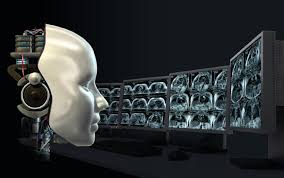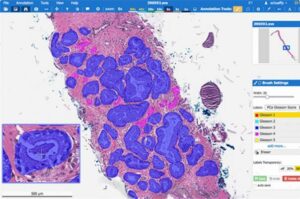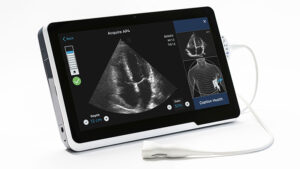
NMPA published the “Review Key Points for Artificial Intelligence Software for Magnetic Resonance Imaging Systems” on September 15, 2023.
The guideline applies to MRI systems adopting AI technology, which is a Class III device according to “Medical Device Classification Catalog”.
The AI software functions must run on the MRI system and be registered with the MRI system as a software component. Some AI software functions are used as independent software that runs on MRI’s general computing platform (workstation, etc.). If it is registered with the MR system as an accessory, it can be regarded as a software component of the MRI system.
AI Functions in MRI
Imaging optimization
Common applications include:
- Improving image quality, for example: image noise reduction, motion artifact removal, etc.
- Optimizing image reconstruction, for example: under-sampled image reconstruction, super-resolution reconstruction, multi-parameter quantitative image reconstruction, etc.
- Improving imaging speed, for example: reduce scanning time, optimize the performance of dynamic imaging, real-time imaging, etc.
Work process optimization
Use AI technology to improve the quality and efficiency of the workflow of the MR system, such as intelligently planning scanning areas and layers in magnetic resonance positioning images, reducing manual operation time, and improving the accuracy and repeatability of scanning positioning.
Quantitative calculation
Quantitative calculation software functions are generally used to process images or other types of data. Its clinical application scenarios may involve auxiliary triage, auxiliary detection, auxiliary evaluation, auxiliary diagnosis, auxiliary treatment, etc., and usually do not control imaging hardware or interfere with scanning operations.
Review Focuses
This guideline outlines the main review areas of AI infused MRI. It covers various aspects, including documentation, non-clinical data, software research, and product labeling.
Documentation Review
- The MRI system with AI functionality should use a generic name, such as “Magnetic Resonance Imaging System”, and avoid adding modifiers like “intelligent” in the product name.
- The product’s structure and intended use should align with standard MRI systems.
- AI software functionalities should be documented in technical requirements or product manuals.
- The use of AI technology does not change the product’s regulatory classification.
- Specific details about AI software functions, principles, target diseases, user populations, clinical applications, limitations, and contraindications should be provided.
- Special attention should be given to AI software functions for children and should be clearly explained in the documentation.
Non-Clinical Data
- Risk management activities should consider factors like intended use, use scenarios, and core functionalities.
- Imaging optimization risks should be assessed, such as AI-induced image quality degradation.
- Workflow optimization should consider potential risks like misalignment in automated processes.
Product Technical Requirements and Test Reports
- Performance indicators should be defined based on the clinical impact of AI software functions.
- For functions like noise reduction, specific performance metrics and user instructions should be provided.
- Details about AI software use conditions and limitations, as well as important parameters, should be included.
Research Data
- Software research reports should describe the core functions and algorithms of AI software.
- The software should undergo relevant testing based on its technical characteristics and risks.
- If the AI software has received international approvals, related documentation should be provided.
Algorithm Principles and Implementation
- The algorithm’s relationship with MR imaging physics should be examined to prevent unintended image distortions.
Training Data and Generalization Capability
- AI software should be tested with diverse MR images to ensure generalization.
Verification and Validation
- Verification should confirm that AI software meets design requirements.
- Confirmation testing in real or simulated clinical scenarios is recommended.
Key Technical Features
- Quantitative calculations should be categorized based on complexity, with specific requirements outlined.
- Multi-parameter imaging should be used to optimize scan processes.
- When AI is used to fit other modality images, specific input and output data requirements must be clarified.
Product Manuals and Labeling
- Product manuals should provide detailed information on AI software, including clinical considerations and limitations.
Quality System Assessment
- During quality system assessment, reviewers should refer to the previous points and focus on design and development documentation related to AI software.
- This summary provides an overview of the key points to consider when reviewing MRI systems with AI software, encompassing documentation, risk management, technical requirements, research data, and more.
The 25-page guideline also has the sections as following:
- Applicability of content in the “List of Basic Principles for Medical Device Safety and Performance”
- Quantitative imaging performance evaluation of MR system AI software capabilities
- Example of product technical requirements (PTR)
For an English copy of the “Review Key Points for Artificial Intelligence Software for Magnetic Resonance Imaging Systems”, please email us at info@ChinaMedDevice.com.
Four AI software guidelines were announced in one day. Click HERE for more information
Click HERE for the latest approval on AI software intended for ischemic stroke detection
- SEO Powered Content & PR Distribution. Get Amplified Today.
- PlatoData.Network Vertical Generative Ai. Empower Yourself. Access Here.
- PlatoAiStream. Web3 Intelligence. Knowledge Amplified. Access Here.
- PlatoESG. Carbon, CleanTech, Energy, Environment, Solar, Waste Management. Access Here.
- PlatoHealth. Biotech and Clinical Trials Intelligence. Access Here.
- Source: https://chinameddevice.com/ai-magnetic-resonance-imaging/
- :has
- :is
- :not
- 15%
- 2023
- a
- About
- accessory
- According
- accuracy
- activities
- adding
- Adopting
- AI
- algorithms
- align
- also
- an
- and
- announced
- Application
- applications
- applies
- approval
- approvals
- ARE
- areas
- artificial
- artificial intelligence
- artificial intelligence software
- AS
- aspects
- assessed
- assessment
- At
- attention
- Automated
- avoid
- based
- basic
- BE
- calculation
- CAN
- change
- characteristics
- Children
- clarified
- class
- classification
- clearly
- click
- Clinical
- COM
- complexity
- component
- computing
- conditions
- Confirm
- Consider
- considerations
- content
- control
- Core
- covers
- data
- day
- defined
- describe
- Design
- detailed
- details
- Detection
- Development
- device
- diagnosis
- diseases
- diverse
- do
- documentation
- documented
- does
- dynamic
- efficiency
- encompassing
- English
- ensure
- etc
- evaluation
- example
- explained
- factors
- fit
- Focus
- following
- For
- functionalities
- functionality
- functions
- General
- generally
- given
- guidelines
- Hardware
- HTTPS
- if
- iii
- image
- images
- Imaging
- Impact
- important
- improve
- improving
- in
- include
- included
- Including
- independent
- Indicators
- information
- infused
- input
- instructions
- Intelligence
- intended
- interfere
- International
- involve
- Issued
- IT
- ITS
- jpg
- Key
- labeling
- latest
- layers
- like
- limitations
- Main
- management
- manual
- May..
- medical
- medical device
- Meets
- Metrics
- more
- motion
- mr
- MRI
- must
- name
- Noise
- of
- on
- ONE
- operation
- Operations
- optimization
- Optimize
- or
- Other
- outlined
- outlines
- output
- overview
- parameters
- performance
- Physics
- planning
- platform
- plato
- Plato Data Intelligence
- PlatoData
- please
- points
- populations
- positioning
- potential
- prevent
- previous
- principles
- process
- processes
- Product
- provide
- provided
- provides
- published
- quality
- quantitative
- real
- real-time
- received
- recommended
- reduce
- reducing
- reduction
- refer
- regarded
- registered
- regulatory
- related
- relationship
- relevant
- removal
- Reports
- Requirements
- research
- resonance
- review
- reviewing
- Risk
- risk management
- risks
- Run
- runs
- Safety
- scan
- scanning
- scenarios
- sections
- September
- should
- Software
- some
- specific
- speed
- standard
- structure
- such
- SUMMARY
- system
- Systems
- Target
- Technical
- Technology
- test
- tested
- Testing
- that
- The
- time
- to
- treatment
- triage
- types
- undergo
- us
- use
- used
- User
- usually
- various
- WELL
- were
- when
- which
- with
- workflow
- workstation
- zephyrnet












